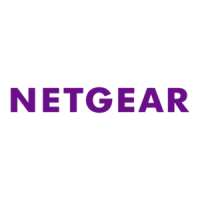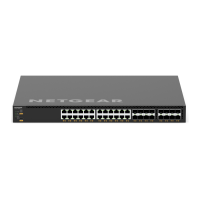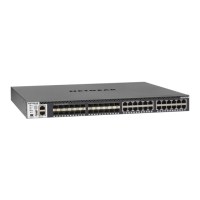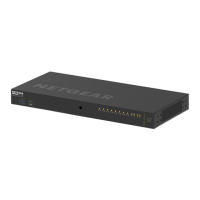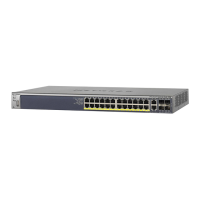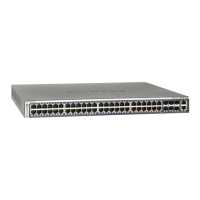Routing
302
M4300 Series and M4300-96X Fully Managed Switches User Manual
6. Use one of the following methods to select an interface:
• In the Go To Interface field, enter the interface in the unit/slot/port format and click on
the
Go button.
• Next to the Port column, select the check box for the interface that you want to
configure.
7. Use Description to enter the description for the interface.
8. Use IP Address
Configuration
Method to enter the method by which an IP address is
configured on the interface.
There are three methods: None, Manual, and DHCP. By default the method is None. Use
the None method to reset the DHCP method.
Note: When the configuration method is changed from DHCP to None, there
is a minor delay before the page refreshes.
9. Use IP Address to enter the IP address for the interface.
10. Use Subnet Mask to enter the subnet mask for the interface.
This is also referred to as the subnet/network mask, and defines the portion of the
interface's IP address that is used to identify the attached network.
11. In the Routing Mode list, select Enable or Disable.
The default value is Enable.
12. Use Administrative Mode to enable or disable the administrative mode of the interface.
The default value is Enable. This mode is not supported for logical VLAN interfaces.
13. Use Forward Net Directed Broadcasts to select how network directed broadcast packets
are handled.
If you select Enable, network directed broadcasts are forwarded.
If you select Disable, they are dropped. The default value is Disable.
14. Use Encapsulation T
ype
to select the link layer encapsulation type for packets transmitted
from the specified interface.
The possible values are Ethernet and SNAP. The default is Ethernet.
15. Use Proxy Arp
to disable or enable proxy ARP for the specified interface.
16. Use Local Proxy Arp
to disable or enable local proxy ARP for the specified interface.
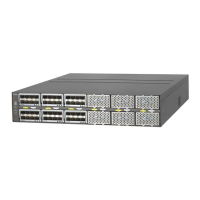
